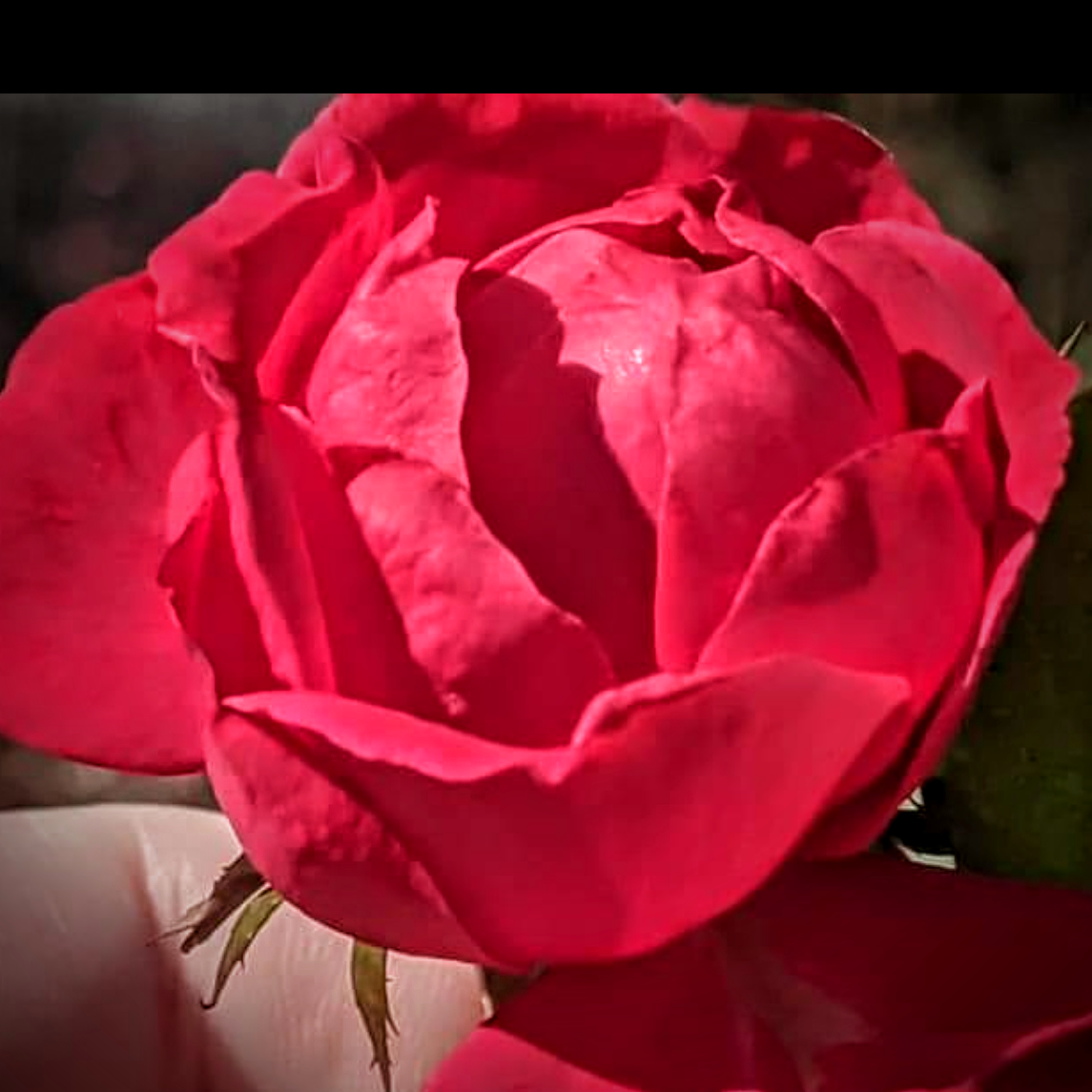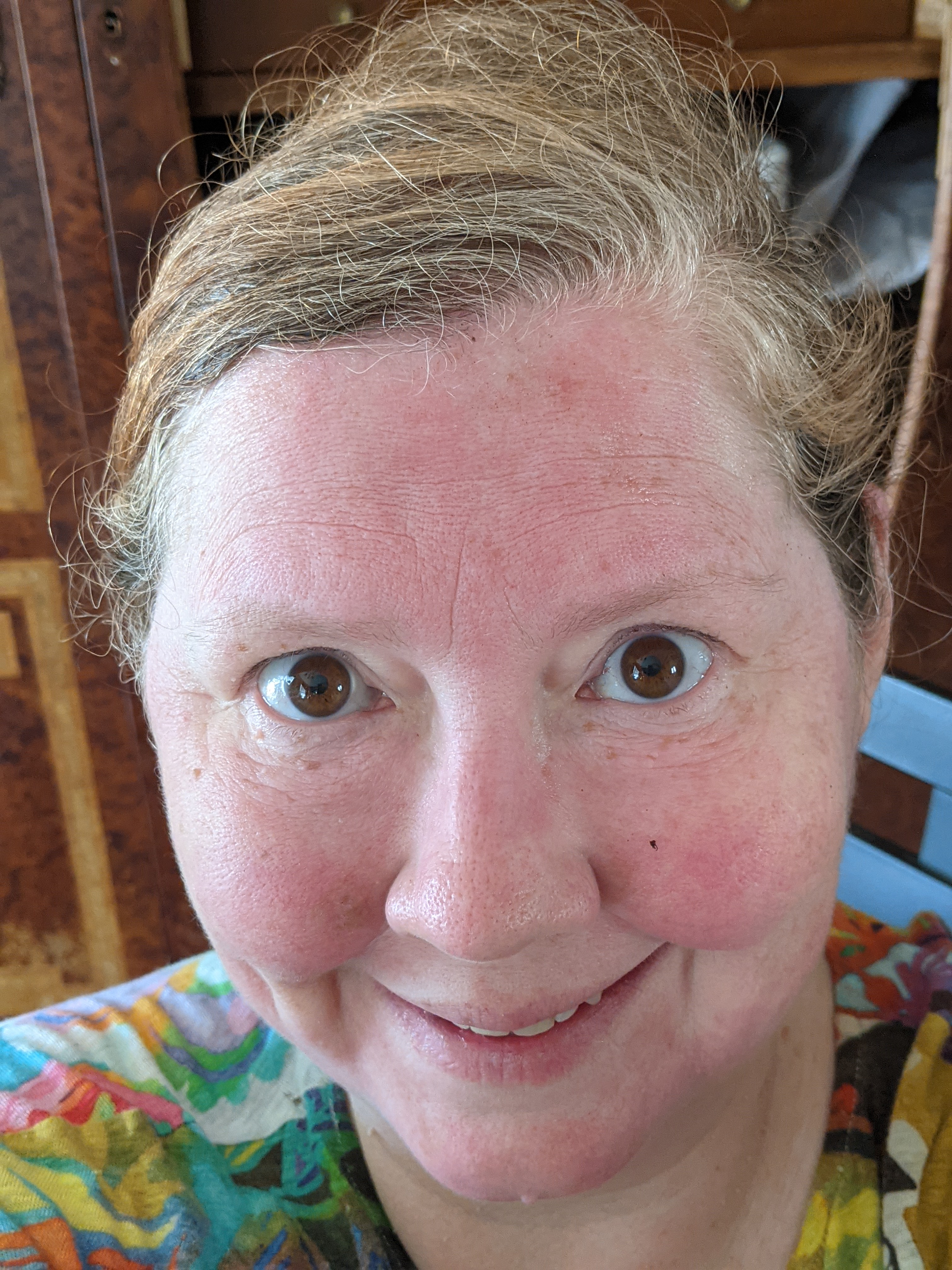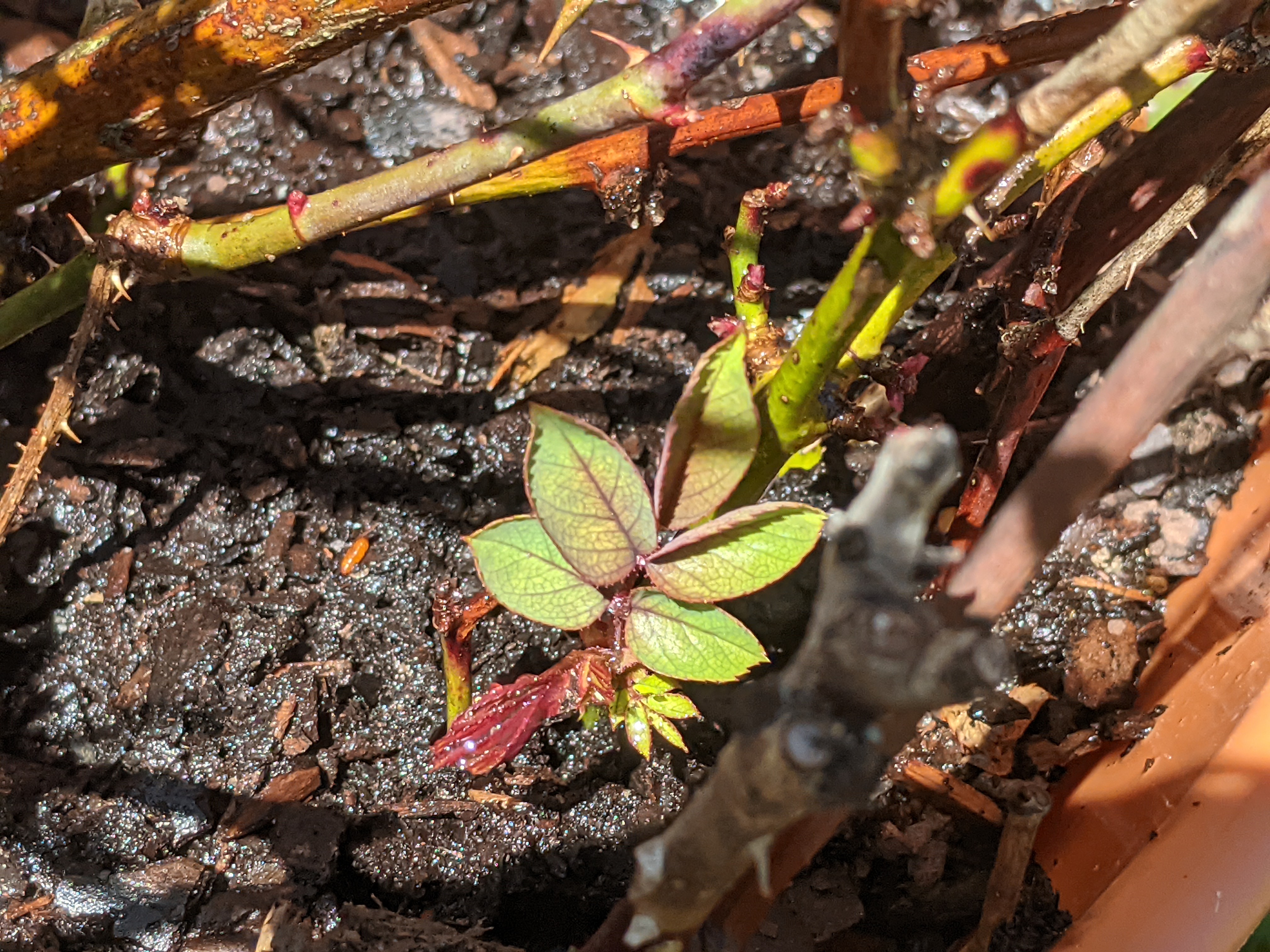 I’ve known for months that Frugal Black Thumb Gardening's roses needed a trim. Besides looking like a mess, they were impinging on my patient’s neighbor’s yard. One bush had been overtaken with blue wildflowers.
I’ve known for months that Frugal Black Thumb Gardening's roses needed a trim. Besides looking like a mess, they were impinging on my patient’s neighbor’s yard. One bush had been overtaken with blue wildflowers.
Getting them back under control was going to be more than a thorn in my side. 🆕 3/31/2021 See UPDATE at the end.
Twenty minutes later, a stack of thorned branches larger than the remaining rosebushes sat to the side. Another idea popped in my mind: Knockout™️ roses propagate well. I wonder whether the greenest of the branches could be salvaged into new plants? I mean, if it doesn’t work, no harm no foul--the branches are trash, otherwise.
It was in the 50s outside—hardly toasty—but that was enough to leave me flushed. Realizing my work time was limited, I moved quickly, filling the bottoms of 2 very large pots with coffee grounds and adding 6 branches. But there was one thing missing: gypsum. I walked inside to look for that, resting on the stairs for a moment. I could feel my heart racing and glanced at my phone. I was experiencing tachycardia.
This entire activity had taken less than 30 minutes. But sometimes, that's all it takes, when you have a combination of Hereditary Alpha Tryptasemia Syndrome (HATS) and Neurocardiogenic Syncope (NCS). I sat for a dozen minutes or so, until my heart rate was down to about 110 bpm. Thankfully, I found 3 chunks of sheetrock (gypsum) to add to each pot. After adding them, I filled the remainder of each pot with soil and gave each a gallon of water.
 I went inside and took a couple of selfies. This is what flushing looks like--it's an important characteristic of multiple mast cell diseases, such as Mastocytosis, Mast Cell Activation Disorder and HATS. Chances are you know someone who looks like this when they exert themselves. People with a history of anaphylaxis or other allergic reactions and flushing often think these reactions are part of their family's “normal.”
I went inside and took a couple of selfies. This is what flushing looks like--it's an important characteristic of multiple mast cell diseases, such as Mastocytosis, Mast Cell Activation Disorder and HATS. Chances are you know someone who looks like this when they exert themselves. People with a history of anaphylaxis or other allergic reactions and flushing often think these reactions are part of their family's “normal.”
- There were 236.5 million Caucasians in America in 2019.
- 4-6% of them carry 2+ copies of TPSAB1, or Hereditary Alpha Tryptasemia.
- About 1/3 of them have HATS.
Chances are, you know one of them.
UPDATE: Twins arrived on 3/30/2021, in good health.


Sources:
2019, United States Census Bureau
2020 September 8-9, Minutes of the International Classification of Diseases Committee Meeting.
______________
The contents of Tryptasemia.com, Tryptasemia.org, and Valutivity.com, such as text, graphics, images, and other material contained on the sites ("Content") are for informational purposes only. The Content is not intended to be a substitute for professional medical advice, diagnosis, or treatment. Always seek the advice of your physician or other qualified health provider with any questions you may have regarding a medical condition. Never disregard professional medical advice or delay in seeking it because of something you have read on this site.
If you think you may have a medical emergency, call your doctor or 911 / 999 / your local emergency #, immediately. These sites' Content do not recommend or endorse any specific tests, physicians, products, procedures, opinions, or other information that may be mentioned on the site. Reliance on any Content provided by the sites' employees, others appearing on the sites at the invitation of Tryptasemia.com/Tryptasemia.org, or other visitors to the Site is solely at your own risk.
Photos on the site are © Valutivity LLC, unless otherwise noted.
